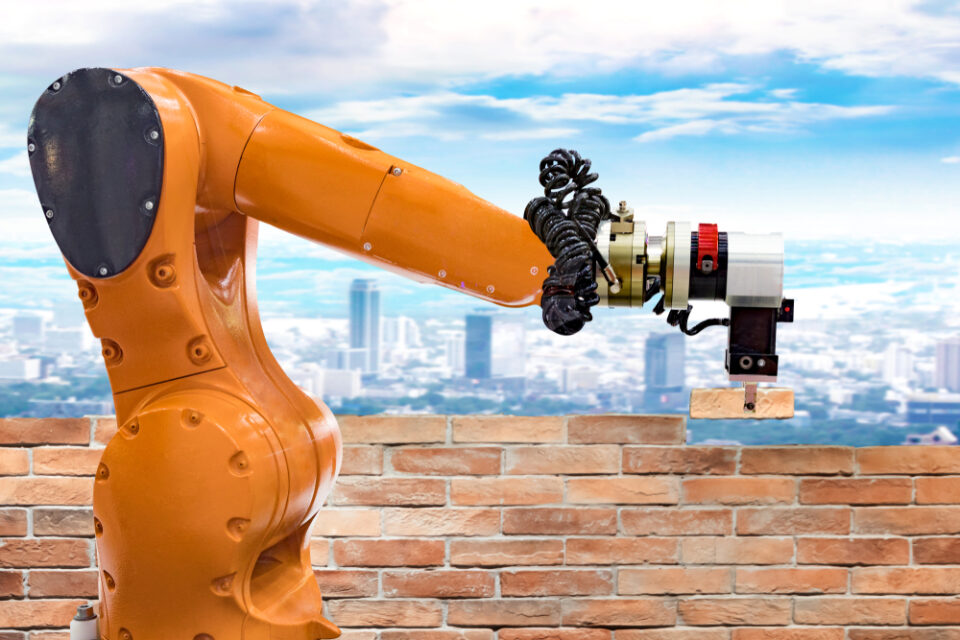The latest report published by IMARC Group, titled “Construction Robots Market: Global Industry Trends, Share, Size, Growth, Opportunity and Forecast 2023-2028″, offers a comprehensive analysis of the industry, which comprises insights on the construction robot market growth. The report also includes competitor and regional analysis, and contemporary advancements in the market. The global construction robots market size reached US$ 129.7 Billion in 2022. Looking forward, IMARC Group expects the market to reach US$ 316.0 Billion by 2028, exhibiting a growth rate (CAGR) of 16.4% during 2023-2028. Construction robots refer to professional service robots that are presently used in the construction of new buildings for substituting manual labor. These robots are gaining widespread preference in the construction sector for performing reliable tasks, such as positioning, bricklaying, tiling, demolishing and tunneling. Apart from this, they can perform repetitive tasks efficiently with enhanced safety, accuracy and precision. Their deployment at construction sites has also led to the elimination of human errors and the potential risks related to accidents and injuries when working in dark, airless and hazardous environments. Advanced robots are now being used to reduce the construction time, which has resulted in improved productivity and a significant reduction in the overall operational costs.
Request Free Sample Report (Exclusive Offer on this report): https://www.imarcgroup.com/construction-robots-market/requestsample
Global Construction Robots Market Trends:
The market is primarily driven by a significant increase in construction activities across the globe. The construction of new residential spaces, coupled with substantial infrastructural development, has catalyzed the demand for high-quality building services. Furthermore, shifting preference toward green construction is acting as another major growth-inducing factor. Robots are increasingly being employed in these projects to accelerate on-site execution, along with enhanced precision and quality work. Additionally, a shortage of skilled labor force has contributed to the gradual shift to automation in the construction industry. Associated advantages such as lower operational costs as compared to manual labor have influenced builders and architects to utilize robots at construction sites.
Moreover, the emergence of collaborative robots (cobots) is also gaining widespread preference in the sector. Cobots are being added to the labor workforce as they collaborate with humans, instead of completely replacing the manual force, to optimize the building process. The introduction of 3D printing robots and wearable exoskeletons is another factor that is expected to create a positive outlook for the market.
Competitive Landscape Key Players:
- Brokk AB
- Husqvarna AB
- Komatsu Ltd.
- Ekso Bionics Europe GmbH
- Fujita Corporation
- Conjet AB
- Giant Hydraulic Tech Co. Ltd.
- Automated Precision Inc.
- Alpine Sales and Rental Corporation
- CyBe Construction BV
- MX3D BV
- Construction Robotics
- Fastbrick Robotics Ltd
- TopTec Spezialmaschinen GmbH
Breakup by Type:
- Traditional Robots
- Robotic Arms
Breakup by Automation:
- Fully Autonomous
- Semi-Autonomous Segments
Breakup by Function:
- Demolition
- Bricklaying
- 3D Printing
- Concrete Structural Erection
- Finishing Work
- Doors
- Windows
- Others
Breakup by Application:
- Public Infrastructure
- Commercial and Residential Buildings
- Nuclear Dismantling and Demolition
- Others
Breakup by Region:
- North America (United States, Canada)
- Europe (Germany, France, United Kingdom, Italy, Spain, Others)
- Asia Pacific (China, Japan, India, Australia, Indonesia, Korea, Others)
- Latin America (Brazil, Mexico, Others)
- Middle East and Africa (United Arab Emirates, Saudi Arabia, Qatar, Iraq, Others)
Key highlights of the report:
- Market Performance
- Market Outlook
- Porter’s Five Forces Analysis
- Market Drivers and Success Factors
- SWOT Analysis
- Value Chain
- Competitive Structure
- Profiles of Key Players
Note: We are in the process of updating our reports. If you want to receive the latest research data covering the time period from 2023 to 2028, along with industry trends, market size, and competitive analysis, click on the request sample report. The team would be able to deliver the latest version of the report in a quick turnaround time.

